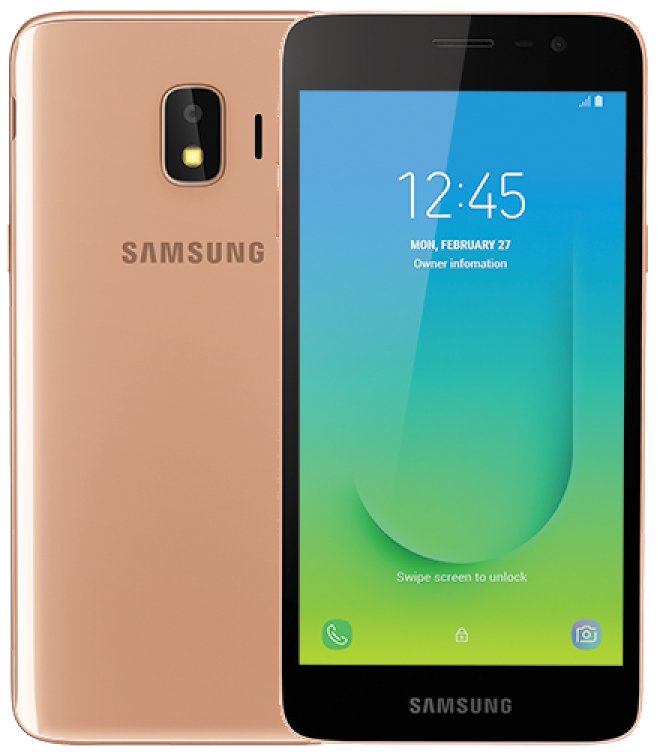The Samsung Galaxy J2 Core was a strategic entry into the ultra-budget smartphone segment. Launched in 2018, it was Samsung's answer for first-time users and emerging markets, offering a streamlined experience via Android 8.1 Oreo (Go edition). This lightweight OS ensured basic functionality on modest hardware, including a 5-inch display, a removable 2600mAh battery, and an 8MP camera, all wrapped in a practical, compact design.

Introduction / Overview
The Samsung Galaxy J2 Core was designed as an accessible gateway into the Android ecosystem. Its primary audience was first-time smartphone users in cost-sensitive markets who needed a device for essential communication and light app usage. The phone's key selling point was its optimized software; the Android Go operating system used lighter versions of apps to run smoothly on limited hardware. While now discontinued, it represented Samsung's commitment to competing at every price point.
Design & Display
The J2 Core features a no-frills, functional design that prioritizes durability and cost-effectiveness. Its compact form factor makes it easy to handle and operate with one hand.
- Dimensions: 143.4 x 72.1 x 8.9 mm (5.65 x 2.84 x 0.35 inches)
- Weight: 154 g (5.43 oz), making it lightweight and pocketable.
- Build: Plastic frame and back with a front protected by Corning Gorilla Glass for basic scratch resistance.
- Colors: Available in Black, Gold, and Lavender.
- Display: 5.0-inch PLS LCD screen with a qHD resolution of 540 x 960 pixels.
- Quality: The 16:9 aspect ratio and 220 PPI pixel density deliver adequate clarity for basic tasks like web browsing and messaging, though it lacks the sharpness of modern HD+ panels.
Performance & Hardware
Performance is strictly utilitarian, focused on delivering a lag-free experience for core smartphone functions rather than high-end gaming or multitasking.
- Chipset: Samsung Exynos 7570 Quad-core built on a power-efficient 14nm process.
- CPU: 1.4GHz quad-core Cortex-A53 CPU (64-bit architecture).
- GPU: ARM Mali-T720 MP1 for handling basic graphics and UI rendering.
- RAM: 1GB of LPDDR3 RAM, the minimum requirement for a functional Android Go experience.
- Storage: Offered in 8GB or 16GB eMMC 5.0 variants, expandable via a dedicated microSDXC card slot, which is essential given the limited built-in space.
Camera
The camera system is designed for documentation rather than creative photography, covering the basics of image capture.
- Rear Camera: Single 8MP sensor with an f/2.2 aperture, accompanied by an LED flash. It supports 1080p video recording at 30fps.
- Front Camera: 5MP sensor with an f/2.2 aperture for selfies and video calls.
- Features: Basic shooting modes include Panorama and HDR to improve shots in challenging lighting conditions.
Battery & Charging
The battery setup is a throwback to an older era of smartphone design, emphasizing practicality and longevity.
- Capacity: 2600 mAh Li-Ion battery.
- Removability: A user-removable battery, a rare feature that allows for easy replacement if the battery degrades over time.
- Charging: Charges via an outdated Micro-USB 2.0 port. There is no support for any form of fast charging.
Software & Features
The software is the defining characteristic of the J2 Core, leveraging Google's lightweight platform to maximize usability.
- Operating System: Shipped with Android 8.1 Oreo (Go edition). This version uses optimized, lightweight apps (like Google Go, YouTube Go) to conserve storage space and RAM.
- Google Play Services: Fully supported, providing access to the entire Android app ecosystem.
- Sensors: Equipped with an accelerometer and proximity sensor for core device functionality like auto-rotate and ending calls when held to the ear.
Connectivity & Network
The phone covers all essential connectivity options for its time, ensuring users can stay connected.
- Network Support: 4G LTE Cat4 (150/50 Mbps) with VoLTE support for HD voice calls. Also supports 2G and 3G fallback.
- SIM: Typically a Single SIM (Micro-SIM) device, though some international variants (denoted by /DS) offered Dual-SIM functionality.
- Wi-Fi: Wi-Fi 4 (802.11 b/g/n) with support for Wi-Fi Direct and Mobile Hotspot.
- Bluetooth: v4.2 for connecting to peripherals.
- USB: Micro-USB 2.0 for charging and data transfer.
- Navigation: GPS with support for GPS, GLONASS, and BDS for accurate location services.
- Other: FM Radio and a standard 3.5mm headphone jack are included.
Pros and Cons
- Pros:
- Runs the efficient Android Go OS, optimized for low-end hardware.
- Removable battery is a major advantage for longevity.
- Compact and lightweight design is easy to use with one hand.
- Brand reliability and access to the full Google Play Store.
- Cons:
- Severely underpowered hardware by modern standards (1GB RAM).
- Low-resolution display (qHD).
- Outdated Micro-USB port instead of USB-C.
- Basic, low-resolution cameras.
- No longer in production or receiving software security updates.
Tags: Samsung, Galaxy J2 Core, Android Go, Budget Phone, Exynos 7570, Removable Battery, Micro-USB
A detailed look at the Samsung Galaxy J2 Core, an Android Go edition smartphone with a 5-inch display, Exynos 7570 chipset, and removable battery, designed for essential tasks.

Post a Comment